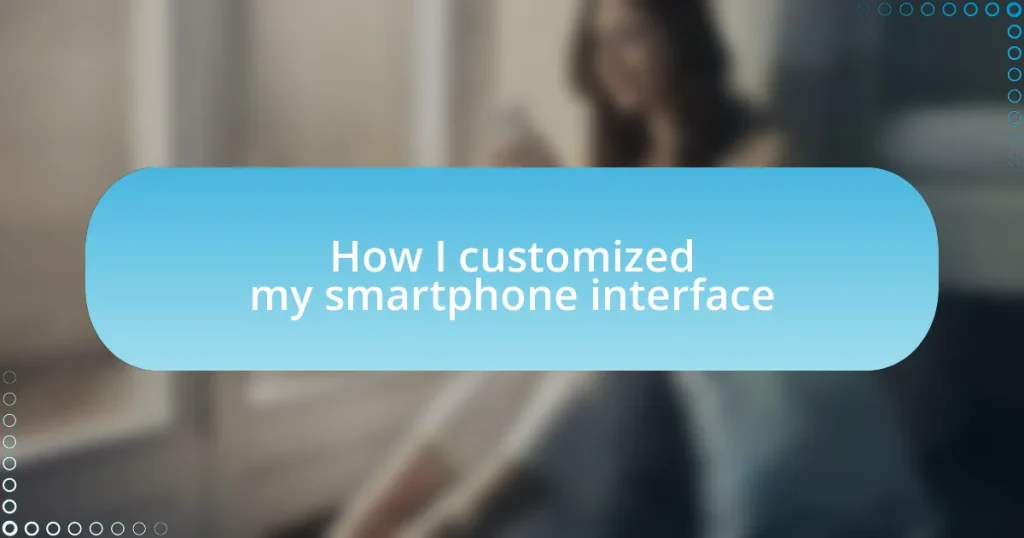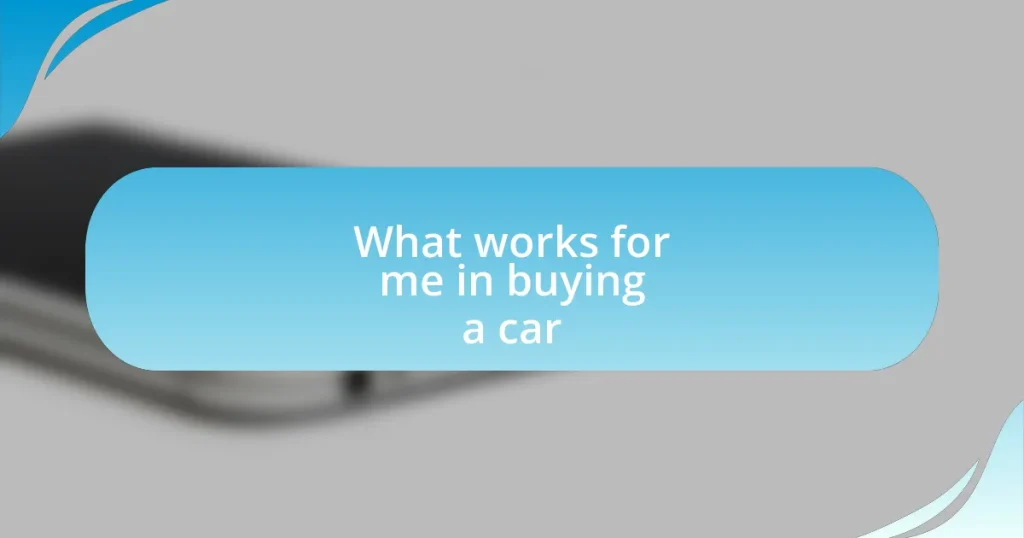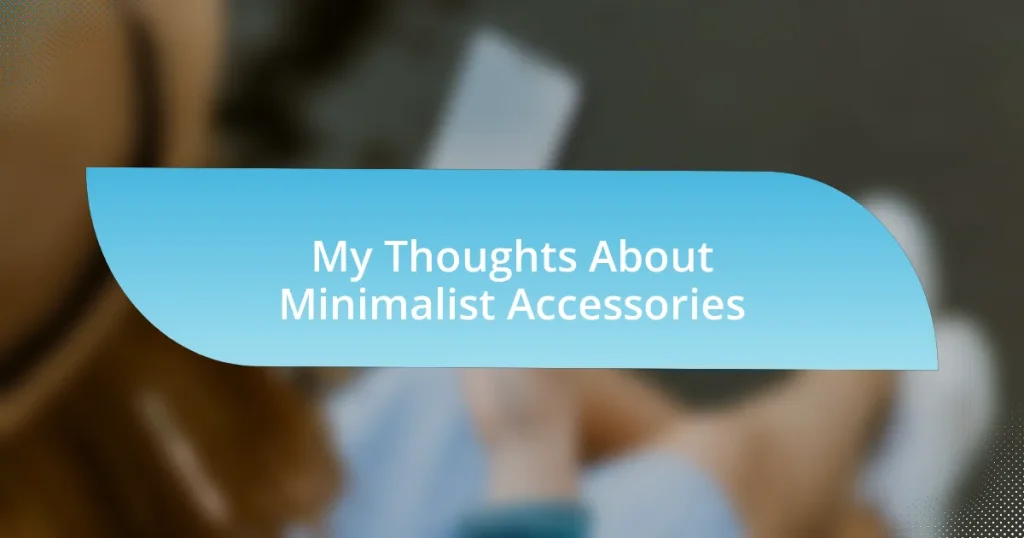Key takeaways:
- Effective smartphone customization begins with assessing used features and frustrations with default settings, creating a streamlined and joyful user experience.
- Choosing the right launcher impacts both functionality and style, making it essential to prioritize performance alongside customization options.
- Organizing app icons and utilizing widgets significantly enhance productivity and ease of navigation, transforming the smartphone interface into a well-ordered space.
- Personalizing wallpapers, themes, and icon packs adds emotional value, creating a unique interface that reflects individual personality and mood.
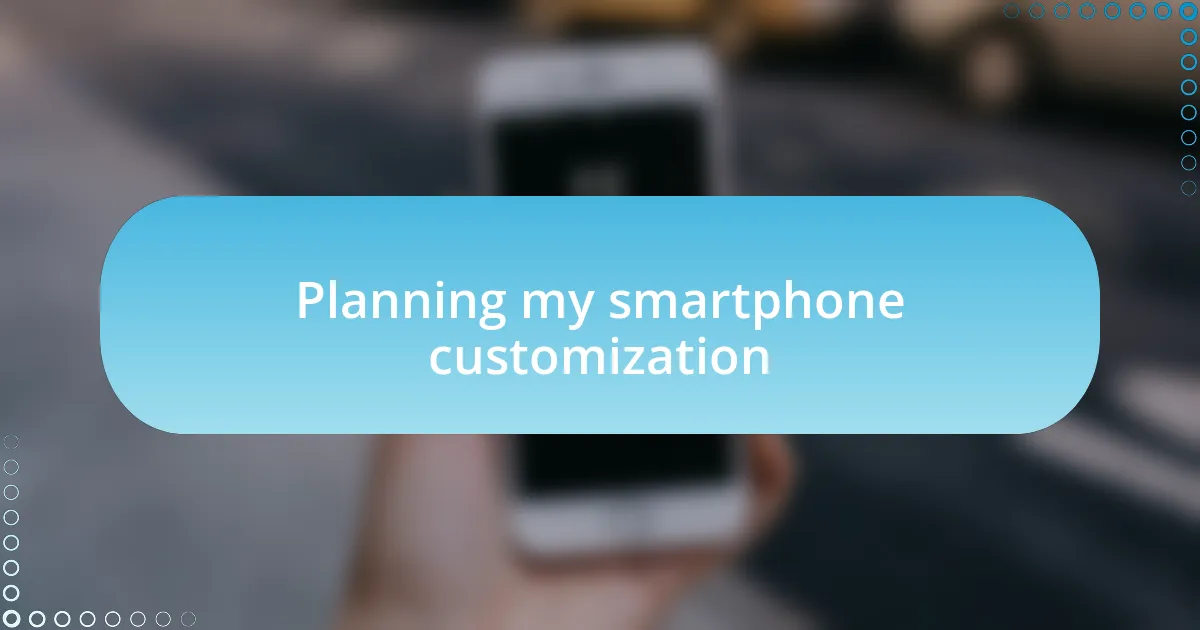
Planning my smartphone customization
When I decided to customize my smartphone, I started by listing the features I actually used and what frustrated me about the default settings. It felt a bit like taking inventory of my digital life—what’s essential, what’s just clutter, and how I can simplify the experience. Have you ever felt overwhelmed by too many apps? It’s enlightening to realize that a streamlined interface leads to a more focused daily routine.
The emotional aspect played a huge role in my planning. I remember feeling excited yet anxious about changing something so integral to my daily life. What if it didn’t look as good as I envisioned, or what if I couldn’t figure out how to revert to the original setup? A simple backup of my home screen layout before diving in was a reassuring safety net that calmed my nerves.
As I mapped out my customization, I asked myself what vibe I wanted my smartphone to emit. Should it be calming and minimalistic, or vibrant and fun? This reflection guided my choices in wallpapers and themes, ensuring that each element not only served a purpose but also brought me joy. What’s your ideal smartphone aesthetic?
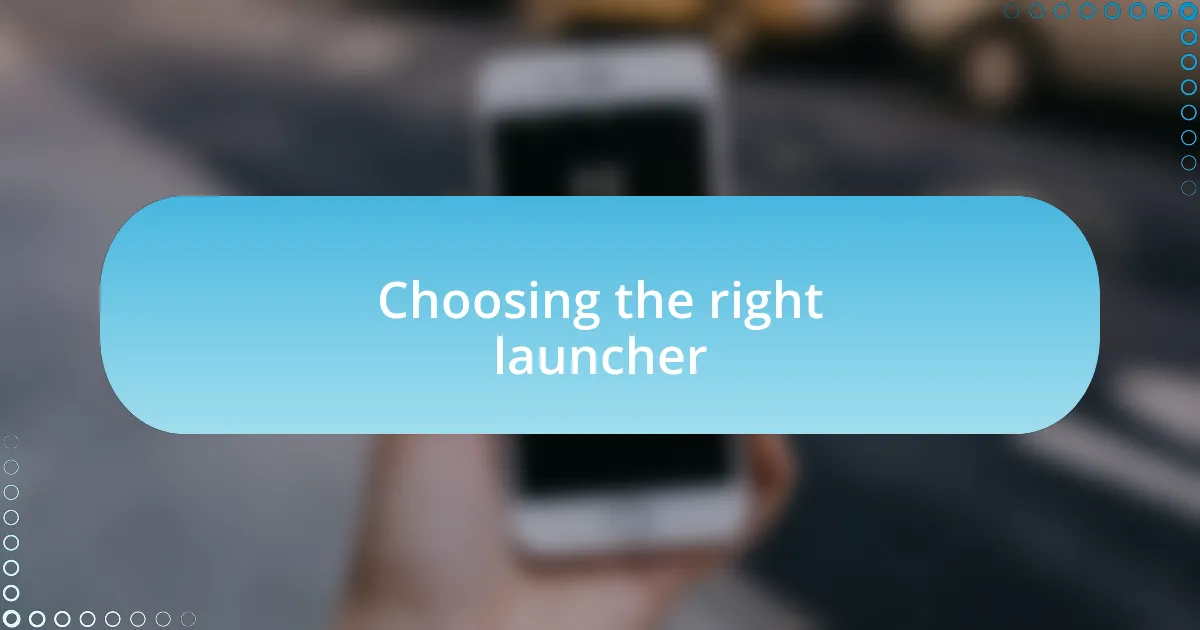
Choosing the right launcher
Choosing the right launcher is a pivotal step in the customization journey. I’ve experimented with various launchers, each offering distinctive features and aesthetics. I found that some launchers focus more on customization options while others prioritize speed and simplicity. Have you ever felt that overwhelmed decision-making process? It can be like trying on several pairs of shoes before finding the perfect fit.
When I settled on a launcher, I made sure it resonated with my design preferences and my daily needs. For instance, some launchers allow for unique transition animations that made my smartphone feel more lively. Interestingly, while some people appreciate a launcher packed with options, I leaned towards one that struck a balance between functionality and style. Ultimately, I wanted my experience to be smooth while infusing a personal touch.
In my journey to find the right launcher, performance became a crucial factor. I remember the frustration of lagging interfaces that made me question my choice. I began to prioritize launchers with efficient memory management and quick access to frequently used apps. It’s fascinating how a small change can result in a more enjoyable smartphone experience, don’t you think?
| Launcher Name | Key Features |
|---|---|
| Nova Launcher | Highly customizable, gestures support |
| Apex Launcher | Simple and clean, fast performance |
| Microsoft Launcher | Integration with Microsoft apps, personalized news feed |
| Action Launcher | Quicktheme and covers, app shortcuts |
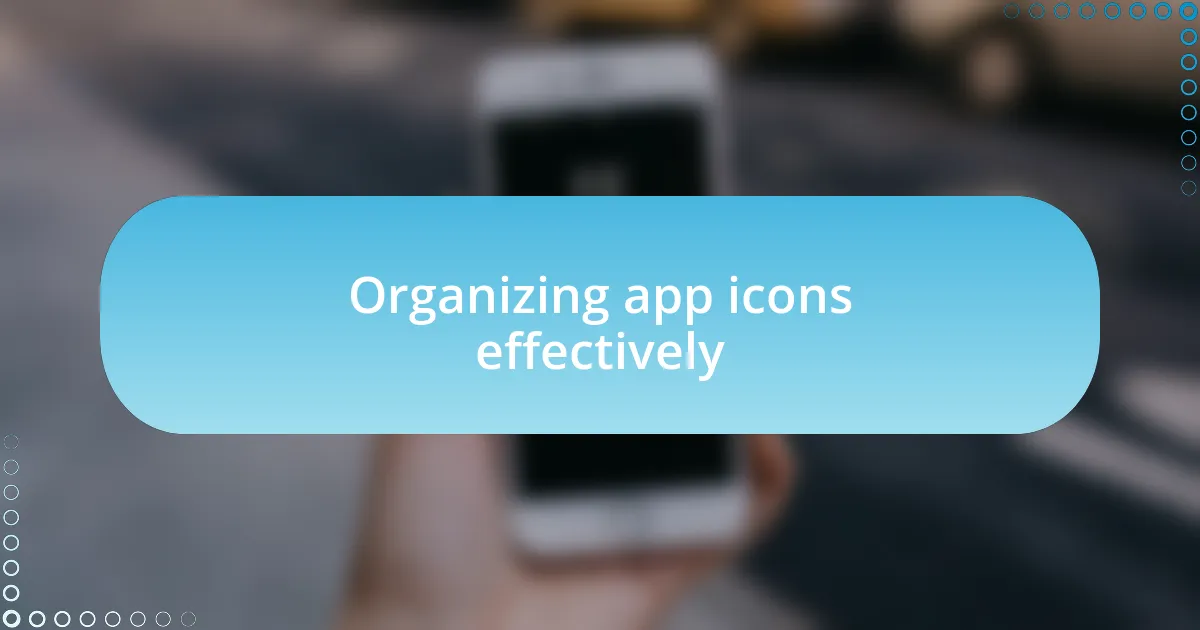
Organizing app icons effectively
Organizing app icons effectively is crucial for creating a smooth user experience. I remember the initial chaos on my home screen, with icons scattered like puzzle pieces that didn’t fit. It took some trial and error, but I eventually found that grouping similar apps together not only decluttered my space but also made navigation much more intuitive. It’s amazing how a little organization can lead to significant peace of mind.
Here are a few strategies I used to organize my app icons:
- Categorize apps: Place social media, productivity, and entertainment apps in their own folders.
- Prioritize frequently used apps: Position these in the dock or on the main screen for quick access.
- Color-coding: Assign colors to folders for an aesthetically pleasing layout while still being functional.
- Use widget space: Incorporate widgets for apps you use daily, reducing the need for multiple icons.
By implementing these strategies, my interface transformed from a confusing landscape into a well-ordered sanctuary. Each time I picked up my phone, there was a sense of satisfaction in knowing everything had its place.
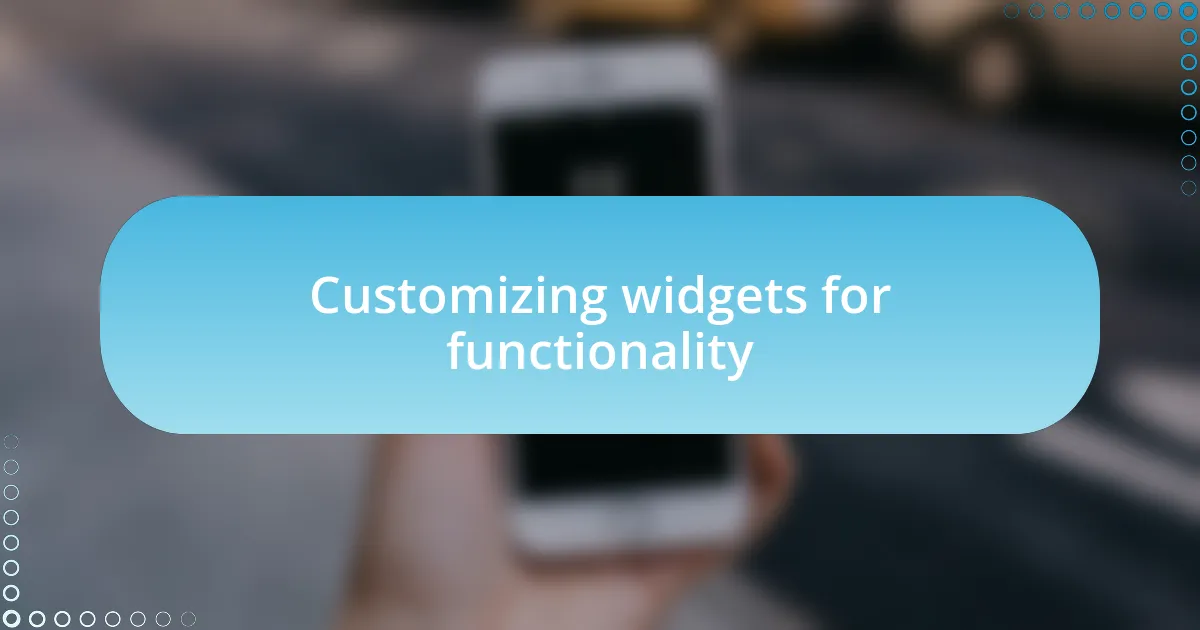
Customizing widgets for functionality
When it comes to customizing widgets for functionality, I’ve found that they can significantly enhance my smartphone experience. For instance, I added a weather widget that not only shows me the current temperature but also details like humidity and wind speed. This small change impacted my daily routine; I no longer stepped outside without knowing if I needed a jacket.
I remember the moment I decided to include a calendar widget on my home screen. Suddenly, I wasn’t just checking my apps—I was keeping track of appointments at a glance, which made me feel more organized and in control of my schedule. Have you ever felt overwhelmed by a busy calendar? By having my upcoming events visible right away, I felt a sense of relief and preparedness that I hadn’t experienced before.
Additionally, integrating a task manager widget transformed how I approach my to-do list. I could see my tasks without digging through an app, allowing me to focus on what truly mattered in my day. The satisfaction that came from checking off completed items felt tangible—like a little victory every time. Have you tried using a widget to manage your tasks? It’s incredible how a seemingly simple customization can empower you to be more productive.
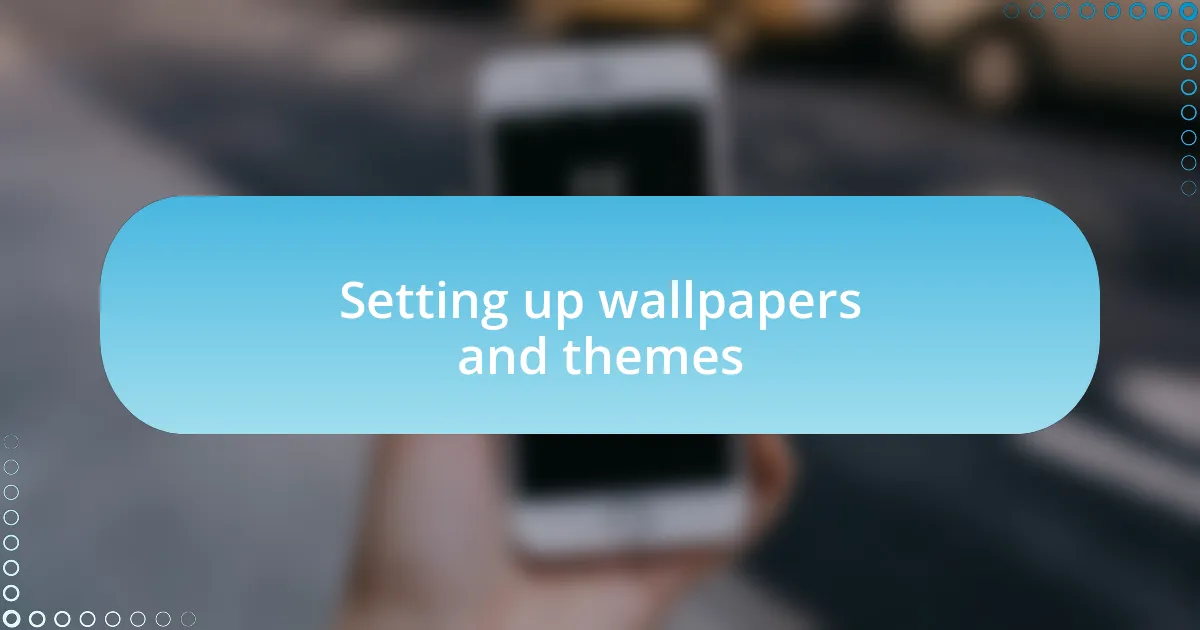
Setting up wallpapers and themes
Setting up wallpapers and themes is one of the most enjoyable aspects of customizing a smartphone. I still vividly recall the day I switched to a calming forest wallpaper; it instantly transformed my mood every time I unlocked my phone. There’s something about a visually appealing background that can uplift your spirits, don’t you think?
When I explored different themes, I noticed how they stylistically stitched together my apps and icons. I chose a minimalist theme that simplified my interface, making it visually cohesive and, frankly, so much easier to navigate. It felt as if I had decluttered not only my screen but also my mind.
I often find myself changing my wallpaper based on the seasons or my current mood. Recently, I opted for a vibrant autumn scene, sparking small moments of joy every time I glanced at my phone. Have you ever experienced how a simple change like that can bring a bit of freshness to your daily routine? It’s remarkable how something so small can offer a glimpse of serenity amidst the chaos of everyday life.
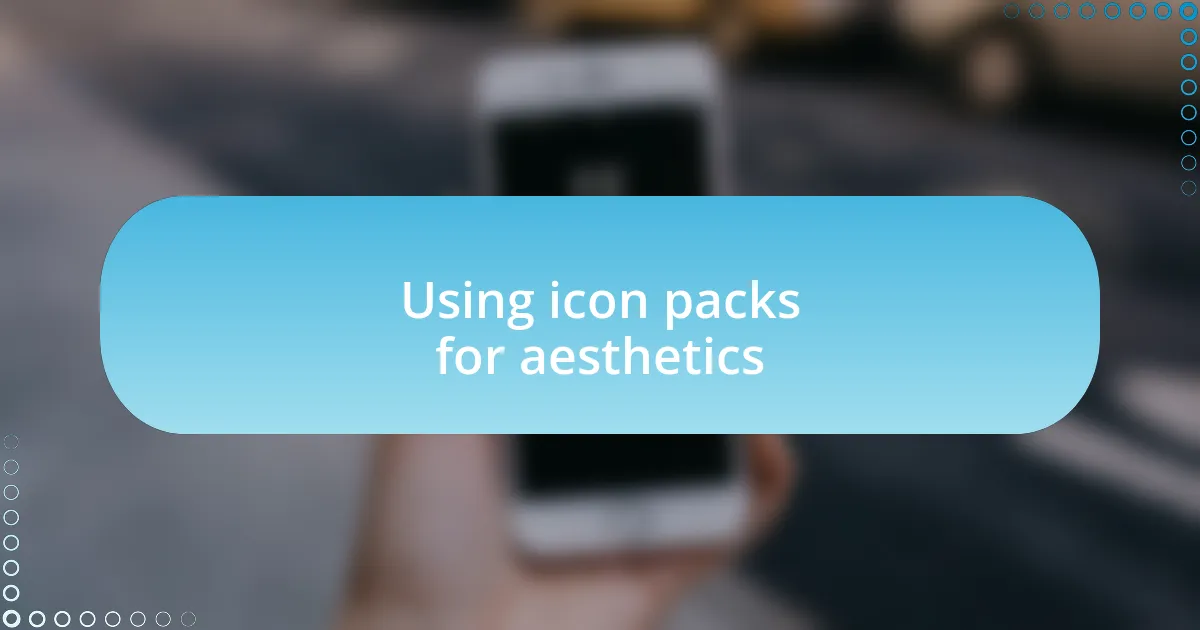
Using icon packs for aesthetics
When I first discovered icon packs, it felt like a treasure trove of creativity at my fingertips. I remember downloading a retro-themed pack that included vibrant, nostalgic icons reminiscent of my favorite childhood video games. That tiny change created an emotional connection, making my daily tasks feel like a fun adventure instead of just mundane chores. Have you ever thought about how something as simple as an icon can evoke memories or feelings?
I quickly learned that using icon packs can dramatically alter the vibe of my home screen. One of my favorites is a soft pastel collection that instantly calms me each time I glance at my device. The gentle colors and playful designs never fail to bring a smile to my face, making me appreciate that even small details can make a big impact. What does your ideal icon look like, and how do you think it reflects your personality?
Choosing the right icon pack has become a game in itself for me. I enjoy experimenting with different styles and discovering how they can change my entire interface. Sometimes I’ll opt for sleek and modern designs; other times, I lean towards quirky and whimsical ones. Each selection feels like a new chapter in my smartphone journey, creating a unique expression of who I am and what I love. Have you considered how your icons could tell a story about you?
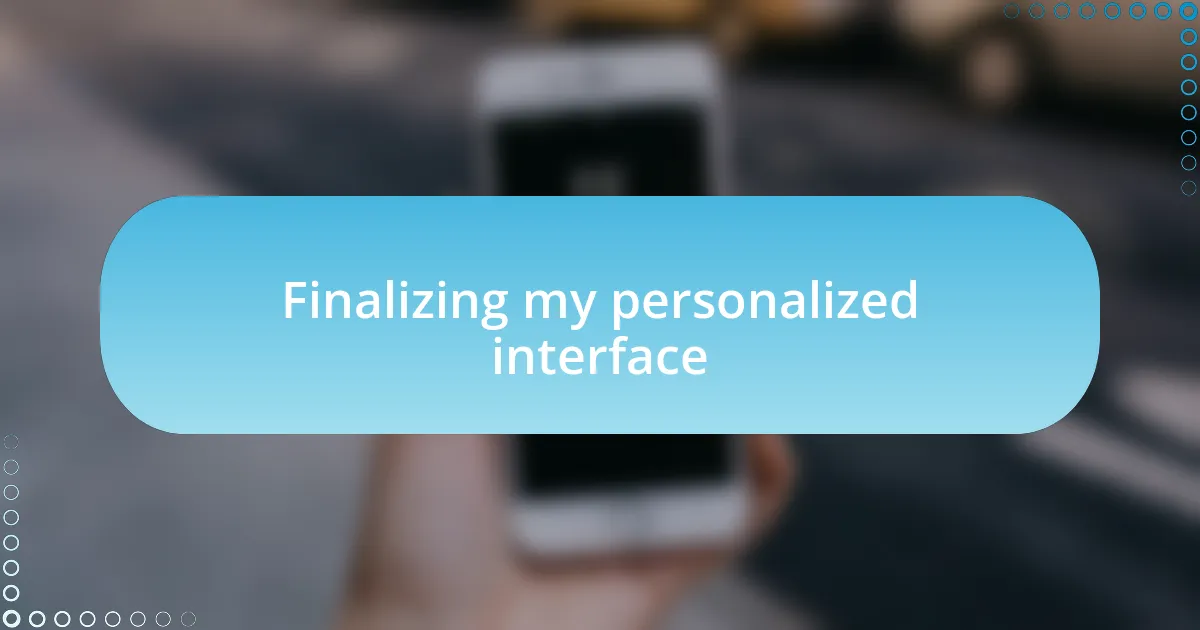
Finalizing my personalized interface
Finalizing my personalized interface was like putting the finishing touches on a masterpiece. After selecting the perfect icon pack, I turned my attention to widgets, which I quickly realized could be the cherry on top of my customization journey. I opted for a weather widget that not only showed the forecast but also included a beautiful background image of the sky, which always sparked joy when I unlocked my phone. How about you—do you have a widget that brightens your day?
Next, I arranged my apps in a way that felt most intuitive to me. I remember spending an afternoon experimenting with different layouts until I found one that not only looked visually appealing but also made it easier for me to access my most-used apps. There’s something satisfying about swiping through screens that feel uniquely mine rather than a generic layout. Have you ever thought about how your app organization influences your productivity?
Finally, I took a moment to consider the overall color scheme of my interface. By matching the colors of my widgets and icons with my wallpaper, I created a cohesive aesthetic that felt comforting and inviting. Each time I glanced at my screen, I was reminded of my personal touch—that this was not just a device, but an extension of my personality. What elements would you harmonize to create your ideal smartphone interface?











